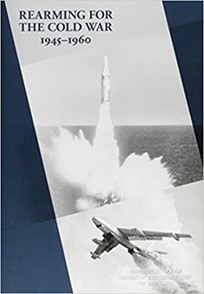- USAF Academy Department of History
Rearming for the Cold War, 1945-1960
by Elliott V. Converse
This volume is a history of the acquisition of major weapon systems by theUnited States armed forces from 1945 to 1960, the decade and a half thatspanned the Truman and Eisenhower administrations following World WarII. These instruments of warfare aircraft, armored vehicles, artillery, guidedmissiles, naval vessels, and supporting electronic systems when combinedwith nuclear warheads, gave the postwar American military unprecedenteddeterrent and striking power.1 They were also enormously expensive.
The volume is organized chronologically, with individual chaptersaddressing the roles of OSD, the Army, Navy, and Air Force in two distinctperiods. The first, roughly coinciding with President Truman s tenure, covers theyears from the end of World War II through the end of the Korean War in1953. The second spans the two terms of the Eisenhower presidency from 1953through early 1961. The year 1953 marked a natural breakpoint between the twoperiods. The Korean War had ended. President Eisenhower and his defense teambegan implementing the New Look, a policy and strategy based on nuclear
weapons, which they believed would provide security and make it possible toreduce military spending. The New Look s stress on nuclear weapons, along withthe deployment of the first operational guided missiles and the rapid advancessubsequently made in nuclear and missile technology, profoundly influencedacquisition in the services throughout the 1950s and the remainder of the century.
As used in this study, the term acquisition encompasses the activitiesby which the United States obtains weapons and other equipment.In surveying the history of acquisition between 1945 and 1960, this
study discusses or refers in passing to many of the hundreds of weapon systemprograms initiated by the services in that period, but it is not a weaponsencyclopedia. Instead, it investigates a few major programs in depth in thebelief that such detailed examination best reveals the evolution of acquisitionpolicies, organizations, and processes, and the various forces influencing weaponsprograms.”

